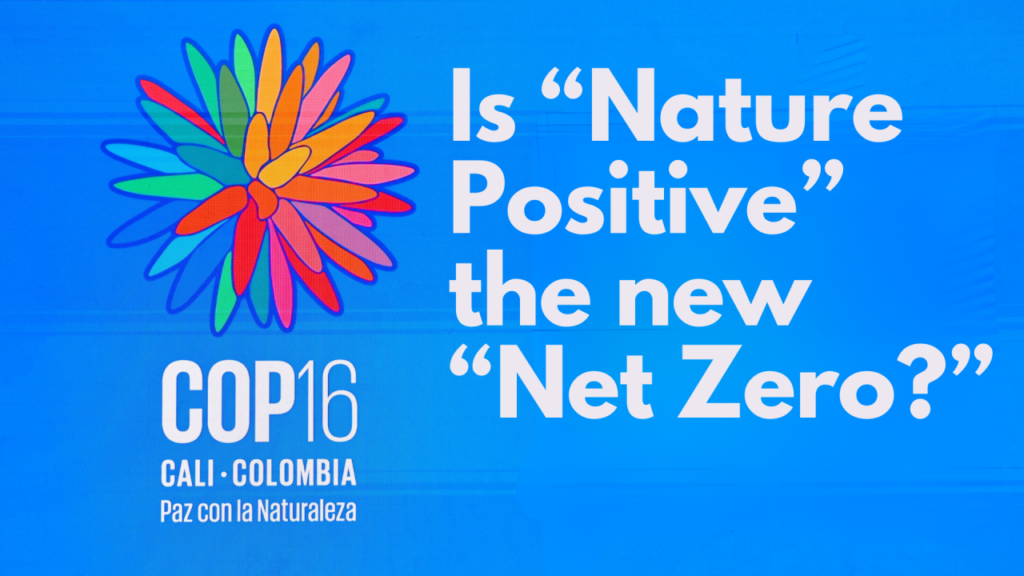Tim Mohin: Is “Nature Positive” the new “Net Zero?”

Follow ESG News on Linkedin
On Monday, COP16 – the United Nations Biodiversity Conference of the Parties (COP) to the UN Convention on Biological Diversity – kicked off in Cali, Colombia. Despite previous UN meetings on biodiversity being the realm of NGOs, activists, and governments, companies are now flooding in – this year’s event is expected to have more than 1,000 private-sector participants, and ‘nature positive’ goals are moving up the corporate agenda.
The new term of art is “Nature Positive” – defined as limiting and reversing biodiversity loss, with a goal of increasing nature by 2030. However, with so many companies brandishing the term around, some wonder if it is becoming a buzzword and if biodiversity is the next area ripe for greenwashing.
Conserving nature is harder to measure than climate, which has clear units of measurement (tons of CO2e). Advocates are pushing for a global biodiversity framework with comparable and consistent metrics. Marco Lambertini of the Nature Positive Initiative said: “The climate community did a super important thing: straight after Paris, they developed a net zero pathway, and then they attached a global standardised way to measure emissions. Now, we need to do the same for nature.”
The Taskforce on Nature-related Financial Disclosures (TNFD) had a series of announcements at COP16, including that they were nearing 500 members. CDP also made an announcement that the number of companies making biodiversity data disclosures has increased by 43% since COP15 (2022).
However, more guidance is needed for companies on how they can help preserve nature, which was one of the goals of this COP. The World Business Council for Sustainable Development announced plans at COP16 to meet this need for more guidance and harmonize nature-related metrics used by corporations to help them track progress toward the nature-positive goal. These guidelines will be released in 2025 at COP30 (the climate COP) in Brazil.
COP16 comes at an inflection point for biodiversity. A WWF report released this month revealed a catastrophic 73% decline in wildlife population sizes over the last 50 years. To accelerate progress toward biodiversity goals, the other issues of this COP include:
- National Biodiversity Strategies and Action Plans (NBSAPs): The Kunming-Montreal agreement at COP15 two years ago set out 23 targets and four goals to meet before 2030, and countries were supposed to present their plans at this year’s meeting. WWF created this handy tracker to show what countries have made plans and their quality. So far, we only count 20 out of 196.
- Biodiversity Financing: Nature is related to around 50% of global GDP, and investors are beginning to recognize this connection. This is why companies are setting more nature-related goals, and nature funding has gone up to $208bn from $166bn three years ago. However, this is far below the recommended $1.15 trillion in annual funding needed for conservation.
- Biopiracy: One of the big issues at COP16 concerns who owns nature’s genetic information. Companies have been using this information to create new pharmaceuticals, cosmetics, and more. Countries rich in biodiversity believe they should be reimbursed for genetic information used for profit, and a deal could be made at COP16 that gives them a percentage.
The scale of the biodiversity problem and the work that needs to be done here may feel overwhelming, and with biodiversity rates continuing to decline at record rates, time is of the essence. With the climate COP (COP29) in Baku in less than a month, and with the interconnected nature of biodiversity and climate action, some are calling for reform of the COP process and to combine these two events.
Follow ESG News on Linkedin












